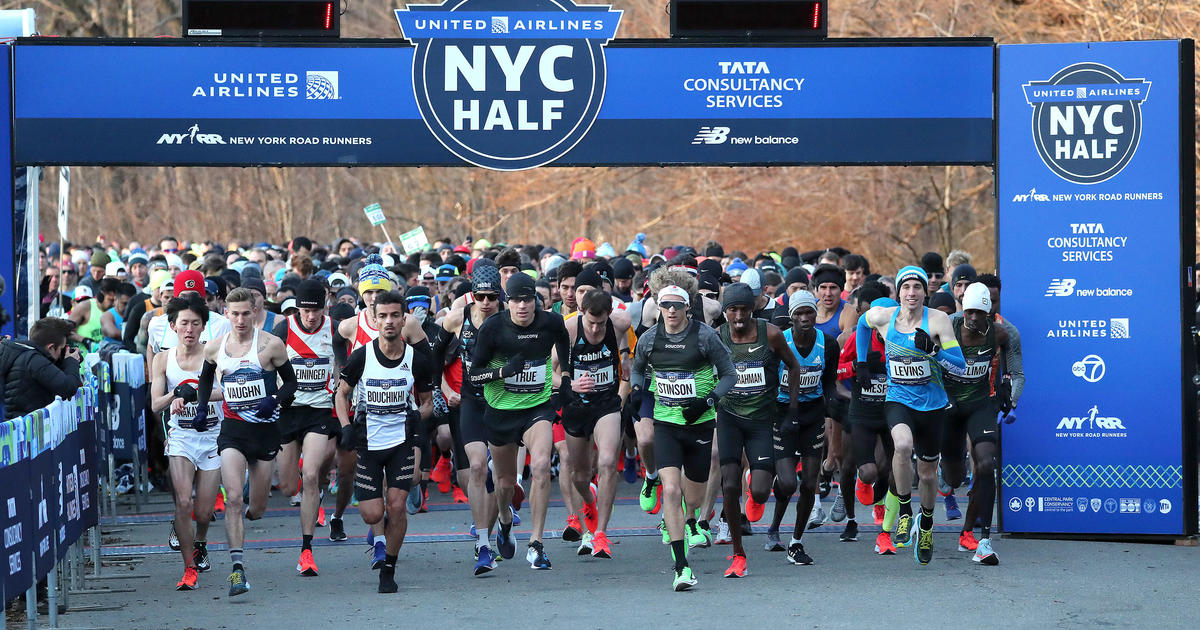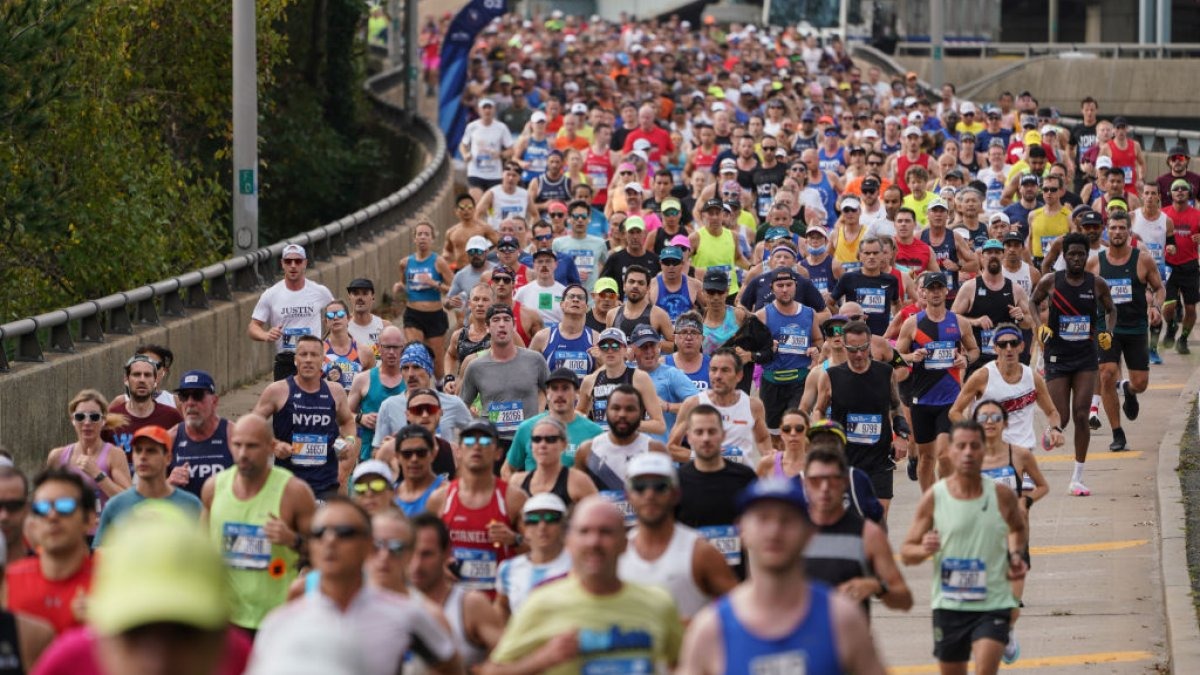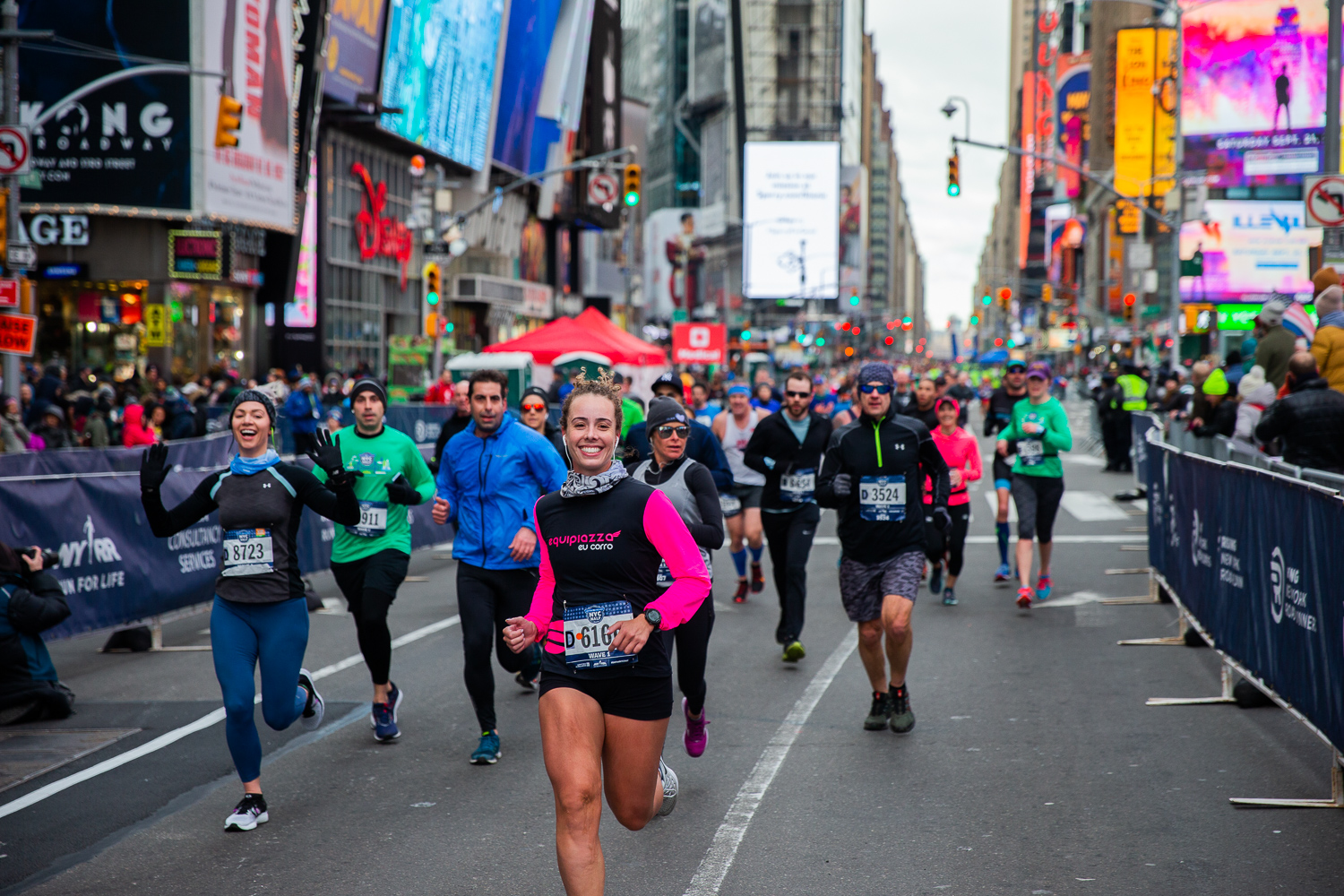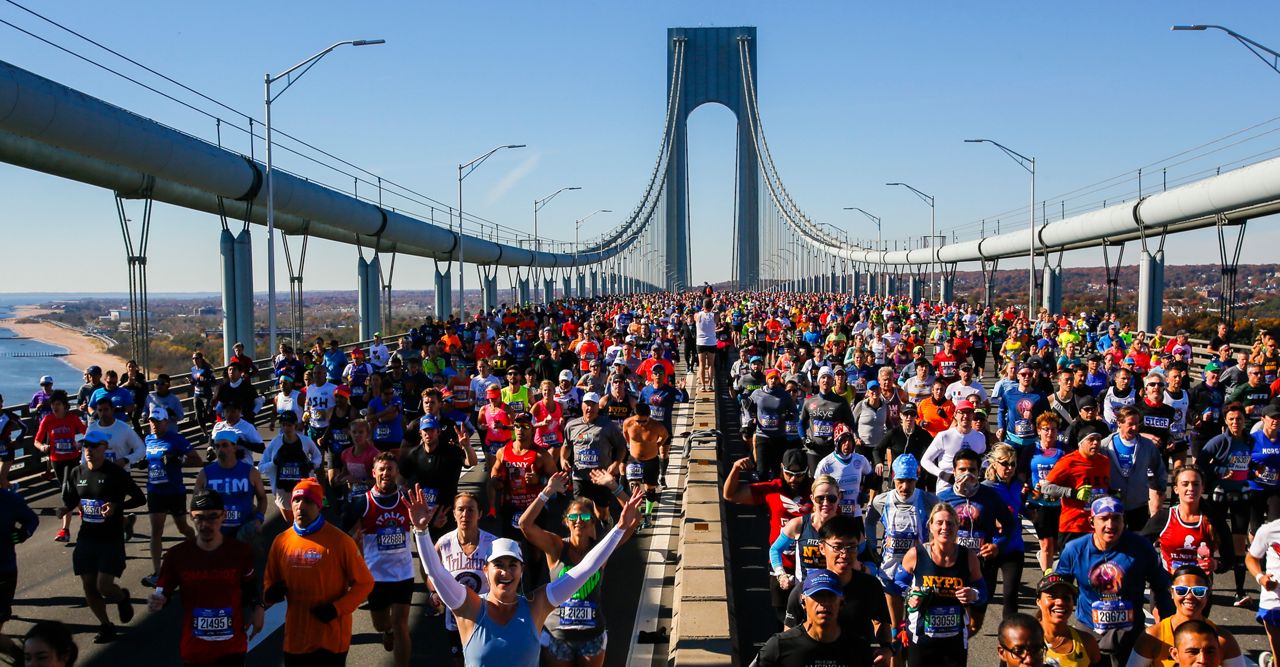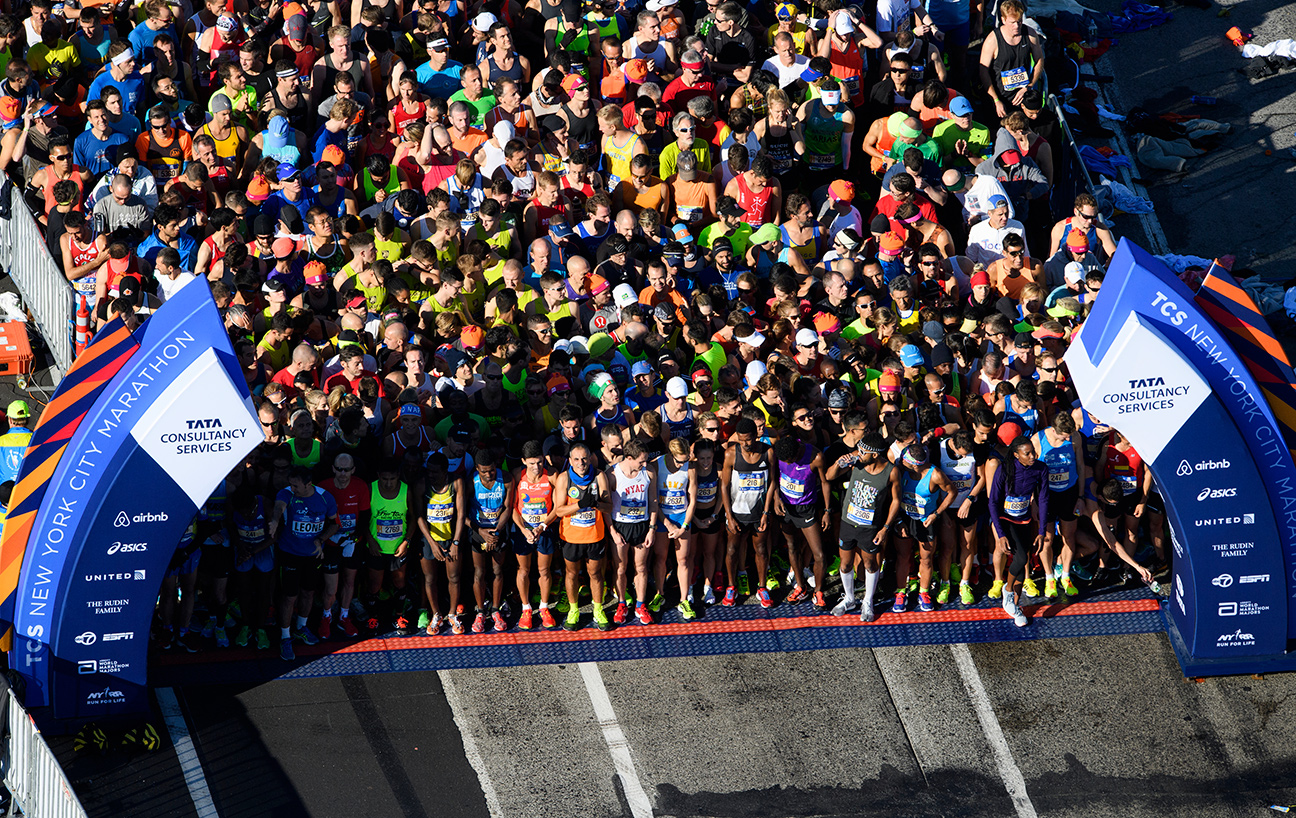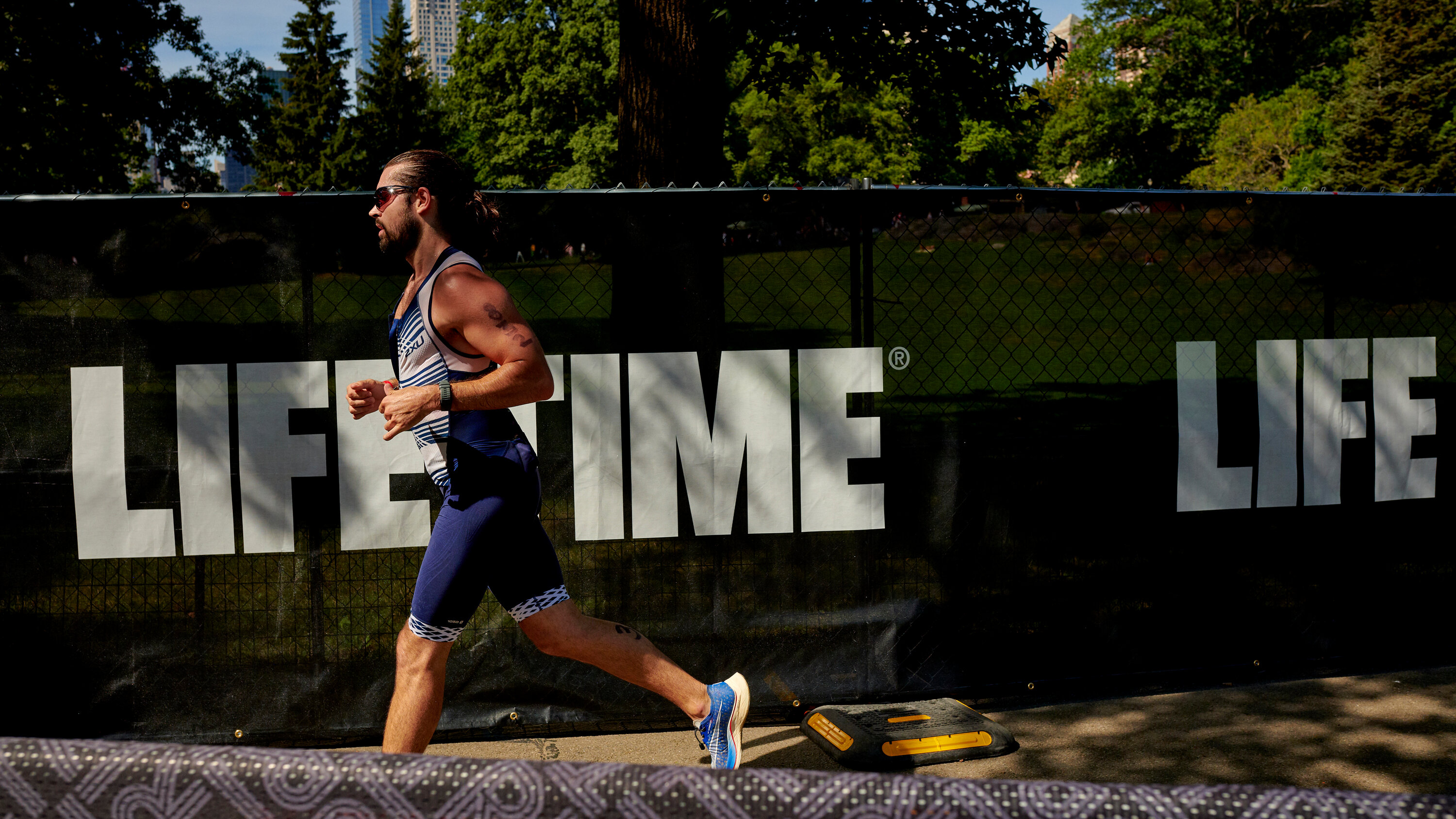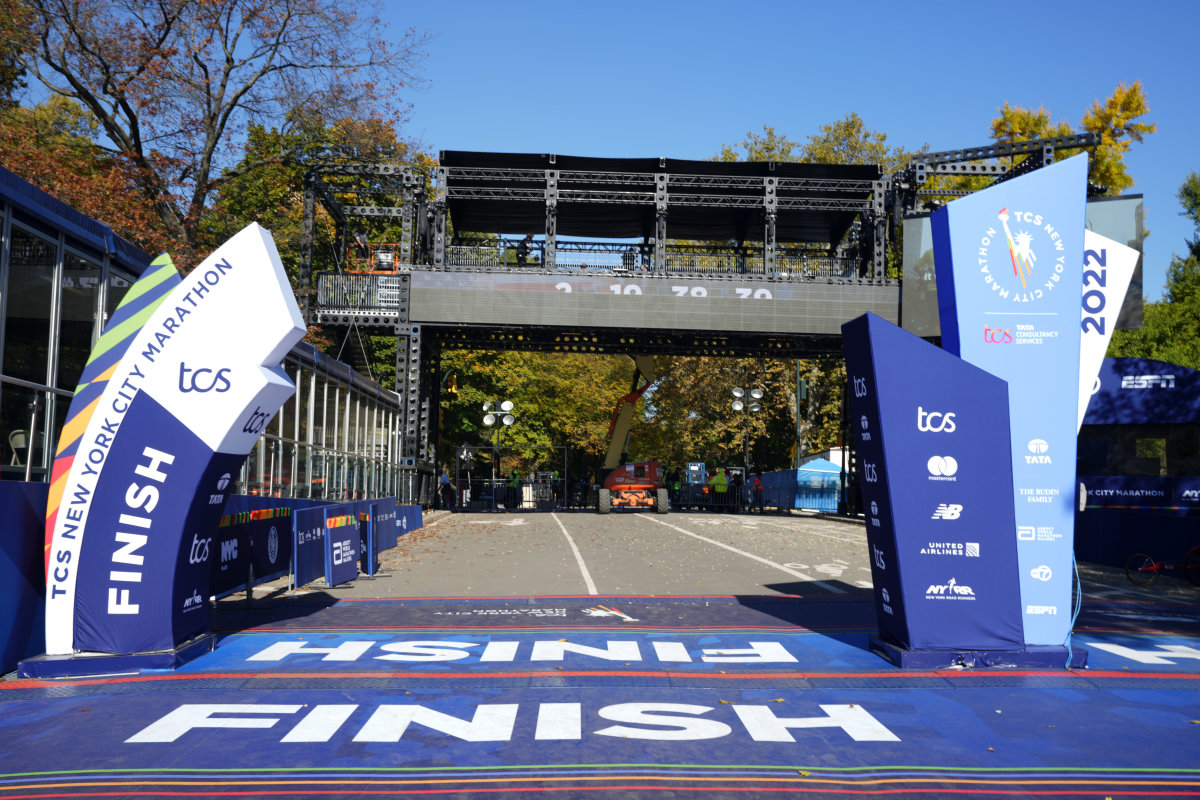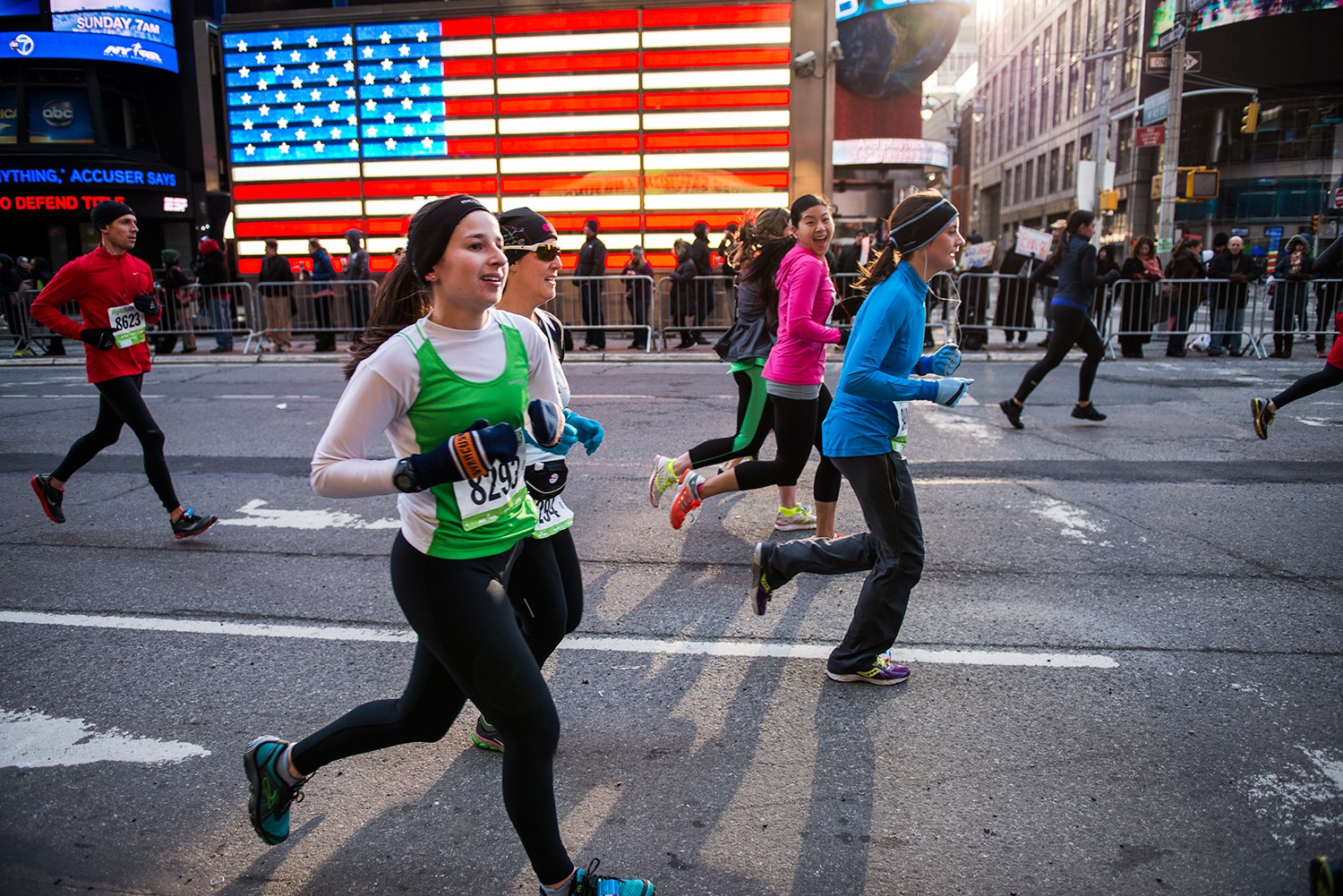

Featured
How To Get Into NYC Half Marathon
Modified: January 22, 2024
Get featured in the NYC Half Marathon with our expert tips and advice. Learn how to secure your spot and start training for this iconic race today.
Introduction
The NYC Half Marathon is one of the most prestigious and sought-after races in the running community. For many avid runners, participating in this iconic event is a dream come true. Whether you are a seasoned marathoner or a beginner looking to challenge yourself, the NYC Half Marathon offers an exhilarating experience and a chance to run through the bustling streets of New York City.
As the name suggests, the NYC Half Marathon covers a distance of 13.1 miles, taking you through some of the city’s most iconic landmarks, including Central Park and Times Square. The race attracts thousands of runners from all over the world, creating a vibrant and electrifying atmosphere that is hard to replicate elsewhere. From the cheering crowds to the stunning views of the city skyline, the NYC Half Marathon is an unforgettable event that showcases the spirit of New York City.
In this article, we will guide you through the process of getting into the NYC Half Marathon and provide valuable tips to help you prepare for the race. Whether you are aiming for a personal best or simply want to enjoy the experience, our step-by-step guide will ensure you are ready to tackle the course and make the most of your NYC Half Marathon journey.
Step 1: Understand the NYC Half Marathon
Before embarking on your journey to participate in the NYC Half Marathon, it is essential to familiarize yourself with the race details and what to expect. Understanding the race course, logistics, and overall experience will help you prepare both physically and mentally.
The NYC Half Marathon takes place annually in the month of March. The race starts in Prospect Park, Brooklyn, and finishes in Central Park, Manhattan. Along the way, you will pass through some of New York City’s most iconic landmarks, including Times Square and the Statue of Liberty. The course provides a unique opportunity to soak in the energy and vibrancy of the city while pushing your limits as a runner.
It is important to note that the NYC Half Marathon is a popular event with limited spots available. Registration typically opens several months in advance, and entries are distributed on a first-come, first-served basis. Therefore, it is crucial to stay updated with the registration dates and secure your spot as soon as possible.
Another aspect to consider is the course elevation. The NYC Half Marathon features a mix of flat stretches and challenging inclines, especially when crossing various bridges in the city. Understanding the course profile will help you tailor your training and develop strategies to tackle these uphill sections effectively.
The race also has strict time limits for completion. Make sure you review the cut-off times for each section of the course and create a realistic pace plan. It is advisable to participate in smaller local races leading up to the NYC Half Marathon to gain experience and confidence in managing your race pace.
Lastly, familiarize yourself with the race-day logistics. Plan your travel to the starting line, arrange for accommodation if needed, and be aware of any pre-race activities or requirements. Understanding these logistics in advance will ensure a stress-free and enjoyable race day experience.
Step 2: Check Eligibility Requirements
Before registering for the NYC Half Marathon, it is important to review the eligibility requirements to ensure that you meet all necessary criteria to participate. Understanding these requirements will help you determine if you are eligible and ready to take on the challenge.
The NYC Half Marathon has certain age restrictions in place. Typically, participants must be at least 18 years old on race day. However, there may be special categories for younger runners, such as the Rising New York Road Runners division. It is essential to check the specific age requirements and categories for your desired participation.
In addition to age restrictions, some races may also have qualifying time standards. These standards determine the level of performance required to participate in the race. In the NYC Half Marathon, there are no qualifying time standards. This means that the event welcomes runners of all levels, from beginners to experienced athletes.
As with any race, it is important to ensure that you are in good health and physical condition to participate safely. The NYC Half Marathon organizers recommend consulting with a healthcare professional before undertaking any rigorous training program or participating in the race. Additionally, be prepared to sign a liability waiver that acknowledges the risks associated with participation.
Furthermore, it is crucial to have a valid photo ID when registering for the race. This will be required to confirm your identity during the registration process and at packet pick-up. Make sure you have a government-issued ID with a clear photo that matches your personal details.
Lastly, for international participants, it is important to review any visa requirements or travel restrictions that may impact your ability to participate in the race. Ensure that you have the necessary permits and documentation to travel and participate in events in the United States.
By checking and understanding the eligibility requirements, you can confirm that you are eligible to participate in the NYC Half Marathon and confidently proceed with the registration process.
Step 3: Register for the Race
Now that you have understood the NYC Half Marathon and met the eligibility requirements, it is time to register for the race. Securing your spot early on is crucial, as the race tends to sell out quickly due to its popularity.
The registration process for the NYC Half Marathon typically opens several months in advance of the race. The official race website is the best place to find up-to-date information on registration dates and procedures. Create an account on the website, if required, and fill out the registration form with accurate personal information.
During the registration process, you will also need to select your desired corral placement. The race organizers assign runners to corrals based on their predicted finish time. It is essential to provide an honest prediction based on your current fitness level and expected pace. This will help ensure that you are placed in the appropriate starting group with runners of similar abilities.
Be prepared to pay the registration fee, which is typically non-refundable. The fee covers the various costs associated with organizing the race, including logistics, race amenities, and participant support. Make sure to have a valid credit or debit card ready for payment at the time of registration.
Keep an eye out for any additional registration requirements or special categories, such as charity entries or international participant protocols. These may have different registration procedures or additional fees, so be sure to review all the relevant information provided by the race organizers.
Once you have completed the registration process and received confirmation of your entry, mark the race date on your calendar and start preparing for the training ahead. It is an exciting milestone to officially secure your place in the NYC Half Marathon and begin the journey towards achieving your running goals.
Step 4: Set a Training Schedule
With your registration for the NYC Half Marathon complete, it is time to create a well-structured training schedule. A proper training program is crucial to build your endurance, improve your speed, and minimize the risk of injuries as you prepare for the race.
Begin by assessing your current fitness level and running experience. This will help you determine a suitable starting point for your training. If you are a beginner, it is advisable to start with a foundation-building phase before progressing to more intense workouts. Intermediate and advanced runners can incorporate higher mileage and more challenging workouts into their training schedule.
Consider working with a professional running coach or utilizing online training resources specifically designed for half marathon preparation. These resources can provide guidance on weekly mileage goals, long runs, speed workouts, and cross-training activities.
A well-rounded training program typically consists of a mix of running workouts and cross-training activities to improve overall fitness and prevent overuse injuries. Include regular runs at varying paces, such as easy runs, tempo runs, and interval training sessions. Gradually increase the distance and intensity of your runs over time.
In addition to running, incorporate strength and flexibility exercises into your routine to enhance your overall performance and prevent muscle imbalances. Focus on strengthening your core, legs, and glutes to improve running form and increase power.
Remember to listen to your body and pay attention to any signs of fatigue or injury. Include rest days in your training schedule to allow for recovery and avoid burnout. Rest and recovery are just as important as the actual training sessions in ensuring your body adapts and grows stronger.
As you progress through your training schedule, periodically reassess your goals and make adjustments if necessary. Building up gradually and consistently will help prevent overtraining and ensure that you reach your peak performance on race day.
Most importantly, stay committed and consistent with your training. Stick to your schedule and make running a priority in your daily life. With determination and perseverance, you will be well-prepared to conquer the NYC Half Marathon.
Step 5: Follow a Balanced Diet
When it comes to preparing for the NYC Half Marathon, nutrition plays a vital role in fueling your body, promoting recovery, and optimizing your performance. Following a balanced diet will provide the necessary nutrients to support your training and enhance your overall well-being.
Start by incorporating a variety of whole foods into your meals, including fruits, vegetables, whole grains, lean proteins, and healthy fats. These nutrient-dense foods will provide the energy, vitamins, and minerals that your body needs to sustain intense training sessions.
Ensure that you are consuming adequate carbohydrates, as they are the primary source of fuel for endurance activities. Focus on complex carbohydrates like whole grains, brown rice, quinoa, and sweet potatoes. These foods release energy slowly, providing sustained fuel during your long runs and workouts.
Protein is crucial for muscle repair and recovery. Include lean sources of protein such as chicken, turkey, fish, tofu, legumes, and dairy products in your diet. Aim to consume protein-rich foods after your workouts to aid in muscle recovery and repair.
Healthy fats are also essential for overall health and performance. Include sources like avocados, nuts, seeds, and olive oil in your diet. These fats provide sustained energy, support brain function, and help absorb fat-soluble vitamins.
Stay hydrated by drinking plenty of water throughout the day. Adequate hydration is essential for optimal performance and aids in digestion, nutrient absorption, and regulating body temperature. During long runs, consider sipping on sports drinks to replenish electrolytes lost through sweat.
Avoid or limit processed foods, sugary snacks, and excessive amounts of alcohol, as they can negatively impact your energy levels, recovery, and overall health. Focus on providing your body with nutrient-rich foods that will support your training and help you reach your goals.
Remember, it is crucial to listen to your body and adjust your diet based on your individual needs and preferences. Some runners may require more carbohydrates, while others may benefit from higher protein intake. Experiment with different foods and meal timings to find what works best for you.
Lastly, consider working with a registered dietitian or nutritionist who specializes in sports nutrition. They can provide personalized guidance and help you create a nutrition plan tailored to your specific needs and goals.
By following a balanced diet, you will fuel your body with the necessary nutrients to perform at your best during training and on race day.
Step 6: Stay Hydrated
Proper hydration is essential for your performance, recovery, and overall well-being during your training for the NYC Half Marathon. Hydration plays a key role in maintaining optimal physical function, regulating body temperature, and preventing dehydration-related issues.
Start by establishing a daily hydration routine. Aim to drink at least 8-10 glasses of water per day, or more if you are engaging in intense physical activity. Carry a water bottle with you throughout the day to remind yourself to stay hydrated and make it easily accessible during your training sessions.
During your training runs, it is important to remain hydrated to replenish fluids lost through sweat. Sip on water or sports drinks before, during, and after your runs to maintain proper hydration levels. The American College of Sports Medicine recommends consuming approximately 16-20 ounces of fluid per hour of exercise, adjusting this based on factors like intensity, duration, and sweat rate.
In addition to water, consider consuming sports drinks that contain electrolytes, such as sodium, potassium, and magnesium. Electrolytes help maintain fluid balance and support proper muscle function. These drinks can be particularly beneficial during long runs or sweaty training sessions.
Pay attention to the color of your urine as an indication of your hydration status. A pale yellow color generally indicates proper hydration, while darker urine may indicate that you need to drink more fluids. Keep in mind that certain medications and supplements may influence urine color, so consult with a healthcare professional if you have any concerns.
It’s important to note that hydration is not just about drinking fluids during exercise but also maintaining an overall hydrated state. Consume hydrating foods such as fruits and vegetables, which have high water content. These foods can contribute to your daily fluid intake and provide additional nutrients and antioxidants to support your training.
It’s also crucial to plan your hydration strategy on race day. Review the race course map to locate water stations and plan your intake accordingly. Take advantage of these stations during the race to quench your thirst and maintain hydration levels throughout the event.
Remember, everyone’s hydration needs may vary. Factors such as climate, intensity of exercise, and individual sweat rates can affect your hydration requirements. It’s important to listen to your body and adjust your hydration plan accordingly.
By staying properly hydrated, you will support your performance, maintain energy levels, and reduce the risk of dehydration-related complications during your training for the NYC Half Marathon.
Step 7: Get Adequate Rest
Rest and recovery are essential components of any training program, including preparing for the NYC Half Marathon. During your training, it is important to incorporate adequate rest to allow your body to repair, rebuild, and adapt to the physical demands of running.
Plan for consistent and quality sleep each night. Aim for 7-8 hours of uninterrupted sleep to support optimal recovery and overall well-being. During sleep, your body releases growth hormones that aid in muscle repair and regeneration. Good sleep also contributes to improved mood, concentration, and immune function.
In addition to a good night’s sleep, schedule regular rest days throughout your training schedule. Rest days allow your muscles, tendons, and ligaments to recover from the stress of running, reducing the risk of overuse injuries. Use these days to engage in gentle and low-impact activities, such as walking, stretching, or yoga.
It is important to listen to your body and pay attention to any signs of fatigue or overtraining. Pushing through extreme fatigue or persistent muscle soreness can lead to burnout and increased risk of injury. If you feel excessively fatigued or notice a decline in your performance, consider taking an extra rest day or incorporating active recovery strategies into your routine.
In addition to physical rest, mental rest is equally important. Give yourself time for relaxation and stress management activities. Engage in hobbies, practice mindfulness or meditation, or spend time with loved ones. This mental break can help reduce stress levels and enhance your overall well-being.
During your rest periods, prioritize self-care practices that promote recovery. This may include foam rolling, stretching, or using a massage roller to release tension in your muscles. Incorporating light strength training or flexibility exercises on rest days can also aid in injury prevention and enhance your running performance.
Finally, avoid the temptation to compare your training or progress to other runners. Remember, everyone’s training journey is unique, and what works for someone else may not work for you. Listen to your body, trust your training plan, and focus on your own goals and progress.
By getting adequate rest, both physical and mental, you will allow your body to recover, recharge, and perform at its best during the NYC Half Marathon.
Step 8: Cross-Train for Optimal Performance
While running is the primary focus of your training for the NYC Half Marathon, incorporating cross-training exercises into your routine can help improve your overall performance, reduce the risk of injuries, and maintain a balanced fitness level.
Cross-training involves engaging in activities other than running that challenge different muscle groups and provide variety to your training regimen. It can include activities such as cycling, swimming, strength training, yoga, or Pilates.
One of the benefits of cross-training is that it allows you to maintain your cardiovascular fitness while giving your running muscles a break. Alternating between running and other forms of exercise helps to avoid overuse injuries and muscle imbalances. It can also improve your overall stamina, endurance, and strength.
Consider incorporating cross-training activities that complement your running goals. For example, cycling can help develop leg muscles and cardiovascular endurance while reducing impact on the joints. Strength training exercises, such as lunges, squats, and step-ups, can improve muscle strength and stability, benefiting your running form and performance.
Yoga and Pilates are excellent choices for runners, as they focus on flexibility, core strength, and body awareness. These activities can help improve your posture, balance, and breathing, which are crucial aspects of efficient running.
Including cross-training activities also provides a mental break from the repetitive nature of running. It can help prevent boredom and keep you motivated throughout your training. Engaging in activities that you enjoy can make your overall training experience more enjoyable and fulfilling.
When integrating cross-training into your schedule, aim for two to three sessions per week. However, be mindful not to overdo it, as excessive cross-training can lead to fatigue and hinder your running performance. Strike a balance between running and cross-training activities to ensure optimal results.
Remember to listen to your body and adjust the intensity and frequency of your cross-training sessions based on your overall training workload. If you notice excessive fatigue or muscle soreness, consider scaling back or modifying the intensity of your cross-training workouts.
By incorporating cross-training exercises into your training plan, you will enhance your overall fitness, reduce the risk of overuse injuries, and improve your performance in the NYC Half Marathon.
Step 9: Find a Running Buddy or Join a Group
Running is often viewed as an individual sport, but having a running buddy or joining a group can greatly enhance your training experience for the NYC Half Marathon. Running with others provides motivation, support, and accountability, making your training journey more enjoyable and rewarding.
One of the benefits of having a running buddy is the added motivation and encouragement they provide. Having someone by your side during training runs can push you to go the extra mile and keep you accountable to your training plan. You can push each other to reach new goals and overcome challenges together.
Running with a partner also adds an element of safety, especially when running in unfamiliar areas or during early morning or late evening hours. Having someone to share the route with can increase your confidence and make you feel more secure during your training runs.
Additionally, running with others can provide a sense of camaraderie. Sharing the highs and lows of training with like-minded individuals who are also preparing for the NYC Half Marathon can create a supportive and encouraging environment. You can exchange tips, share experiences, and celebrate milestones together.
Joining a running group or club is another excellent option for finding a community of runners. These groups often provide organized training sessions, group runs, and access to experienced coaches or mentors. Being part of a running group can offer guidance, guidance and structure to your training, and give you opportunities to connect with other runners who share your goals.
Some communities also organize running events, such as weekly group runs or social outings, where you can meet and connect with fellow runners. These events provide a fun and social atmosphere, allowing you to build friendships and create a support network that extends beyond training for the NYC Half Marathon.
If you are unable to find a running buddy or join a group in your local area, consider exploring online running communities and forums. These platforms offer a chance to interact with runners from around the world, share experiences, seek advice, and find virtual running partners.
Remember to respect each other’s pace and goals when running with others. Everyone has different abilities and objectives, so it is important to communicate and find a suitable arrangement that meets the needs of all participants.
By finding a running buddy or joining a group, you can harness the power of community, stay motivated, and enjoy the journey towards the NYC Half Marathon together.
Step 10: Prepare for Race Day
As the NYC Half Marathon approaches, it’s essential to prepare yourself physically and mentally for the big day. Taking the time to plan and organize the details will help ensure a smooth and enjoyable race experience.
First, familiarize yourself with the race-day logistics. Review the official race website for important information such as start times, wave assignments, and designated staging areas. Know the location of the starting line, the race route, and any landmarks or turns along the way. This knowledge will help you navigate the course confidently.
Plan your travel and accommodation arrangements in advance. If you are coming from out of town, ensure you have accommodation that is convenient to the race start. Check for any road closures or public transportation disruptions that may affect your journey to the race site.
Prepare your race-day equipment and attire. Lay out your running gear the night before, ensuring you have comfortable clothing, supportive shoes, and any necessary accessories like running watches or GPS devices. Don’t forget essentials like sunscreen, a hat, and sunglasses if the weather calls for it. You may also want to consider wearing or carrying a race belt or hydration pack for easy access to fuel and fluids.
Develop a fueling strategy for race day. Experiment with different nutrition and hydration methods during your long training runs to determine what works best for you. Plan what and when you will eat before the race, and consider carrying energy gels or snacks for the duration of the run. It’s important to stay fueled and hydrated throughout the race to maintain your energy levels.
Mentally visualize yourself crossing the finish line. Create positive affirmations and use visualization techniques to build confidence and alleviate race-day nerves. Remind yourself of all the hard work you have put into your training and trust in your abilities to complete the race.
Finally, get a good night’s sleep the night before the race. Having a restful sleep will ensure you wake up feeling energized and ready to conquer the NYC Half Marathon. Avoid any strenuous activities or excessive food or alcohol consumption the night before to prioritize rest and recovery.
On race day, arrive at the starting area early to allow time for warm-up exercises, stretching, and mentally preparing for the race. Follow the pre-race routine that you established during your training to get your body and mind in the proper race mindset.
During the race, trust in your training and pace yourself accordingly. Start conservatively and aim to maintain a steady and comfortable pace throughout the course. Remember to stay hydrated at the aid stations and refuel as needed to sustain your energy levels.
Celebrate your accomplishment as you cross that finish line! Take time to cool down, stretch, and reflect on your achievement. Give yourself a pat on the back for completing the NYC Half Marathon and enjoy the sense of accomplishment that comes with reaching your goal.
Preparing for race day is the culmination of weeks or even months of training. By being well-prepared and organized, you can make the most of this incredible experience and finish the NYC Half Marathon with pride.
Conclusion
The NYC Half Marathon is an exhilarating event that offers a unique opportunity to run through the remarkable streets of New York City. By following the steps outlined in this guide, you can ensure that you are fully prepared for this iconic race.
Understanding the race details, checking eligibility requirements, and registering early are essential steps to secure your spot in the NYC Half Marathon. Setting a training schedule, following a balanced diet, and staying hydrated will optimize your performance and keep you healthy throughout your training journey.
Incorporating rest, cross-training, and finding a running buddy or joining a group will provide support, motivation, and a sense of community during your training. Lastly, taking the time to prepare for race day, from logistics to equipment and mental visualization, will set you up for success on the big day.
Remember, the NYC Half Marathon is not just about the destination—it is the culmination of your dedication, hard work, and passion for running. Embrace the journey, enjoy the process, and savor every moment as you cross the finish line.
As you embark on this incredible adventure, keep in mind that each step you take is an accomplishment in itself. Whether you are aiming for a personal best or simply seeking the experience of running through the heart of New York City, the NYC Half Marathon will be a memory that lasts a lifetime.
So lace up your running shoes, put your training to the test, and embrace the challenge. The NYC Half Marathon awaits, ready to reward you with an unforgettable experience and a sense of achievement that only comes from completing a race that embodies the spirit of one of the greatest cities in the world.
